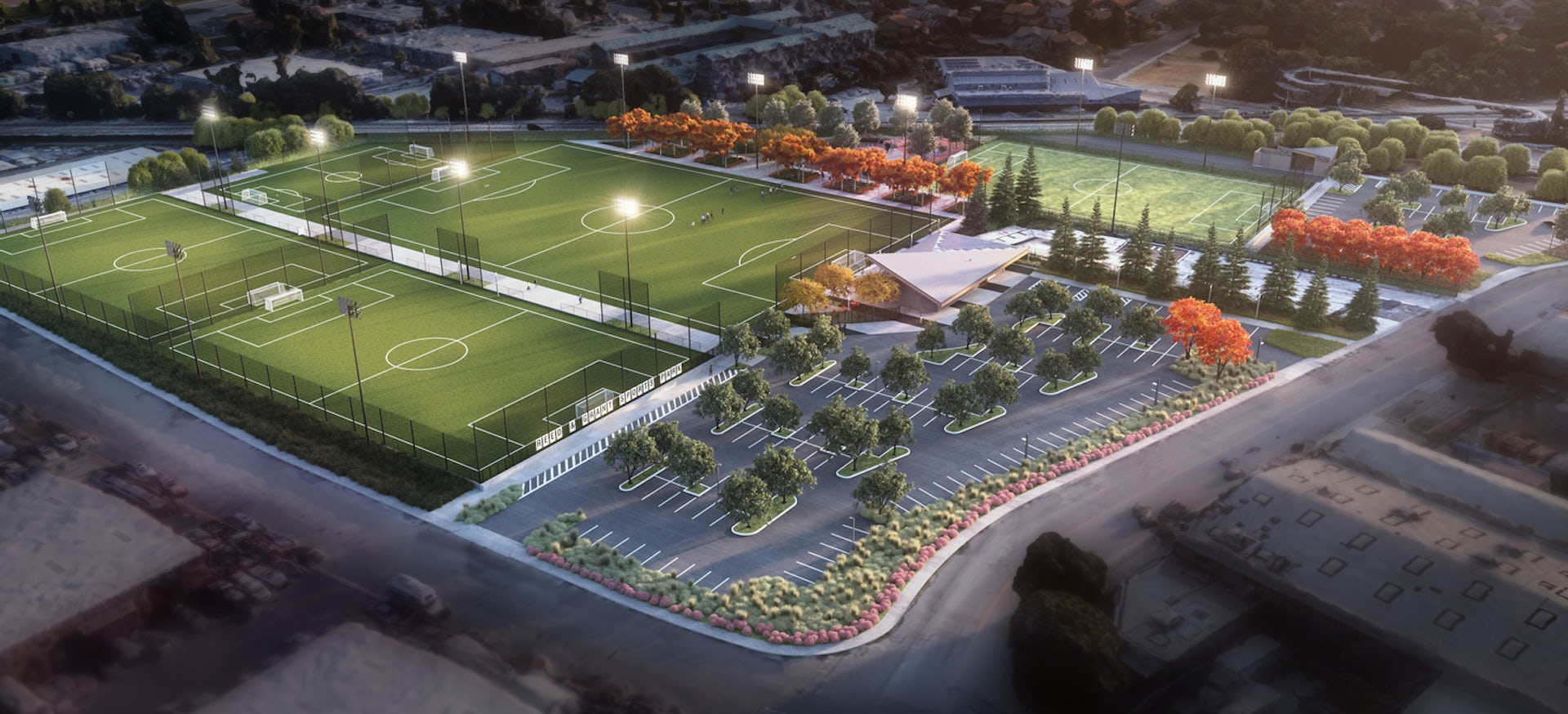AWPA Silicon Valley recognizes Reed and Grant Sports Park for representing the best in public works
The LPA-designed Reed and Grant Sports Park in Santa Clara, California, was recently named “Project of the Year” by the American Association of Public Works (AWPA) Silicon Valley Chapter. Honored in the Environment/Parks category, the design transformed a 9.75-acre brownfield site in an industrial zone into a sports and public facility for an under-served community.
AWPA is an international educational and professional association of public agencies, private sector companies, and individuals dedicated to providing high quality public works goods and services. Its awards program recognizes the best projects in public works.
The sports park reflects the mission of “Parks Make Life Better” by providing the City of Santa Clara a place where youth athletic programs can flourish, community members can engage in recreational activities, and children of all ages and abilities can enjoy a playscape designed as an all-inclusive setting. From the outset, the community was involved in the design process, helping to create an environmentally and fiscally sustainable facility that creates a new icon and gathering point for the community.
Extensive workshops and community outreach helped the City and designers identify specific needs and clear stakeholder priorities, which allowed the City to focus funds on improving parks in neighborhoods. The project also addressed a Council Pillar “to enhance community sports, recreation and arts assets.”
The design fit five sports fields and an all-purpose recreation building on to the site, utilizing every inch of available land. The fields are sized for perpendicular play, accommodating a variety of sports and age ranges. The facility can be reconfigured to accommodate youth tournaments for numerous age groups and play levels.
The entire site features low water use and native plant material. Recycled water is used for the irrigation system and restrooms, helping to reduce the building’s water consumption by 85%. The building’s orientation and hipped roof allows for natural daylighting. The roof drainage feeds into an energy dissipation and collection amenity that is piped to a bio-filtration basin. The roof allows for a large array of photo voltaic panels capable of harvesting enough power to run the building, exterior sports lights and maintenance support building. Parking stalls are equipped with vehicle charging stations to fulfill the City’s leadership on providing clean renewable energy.

















